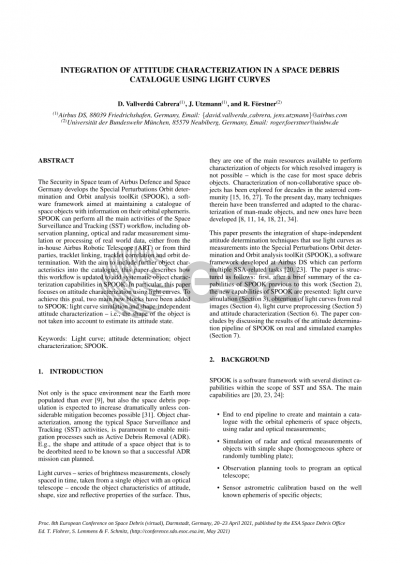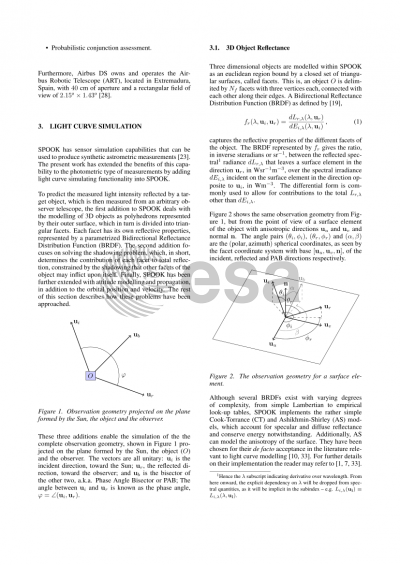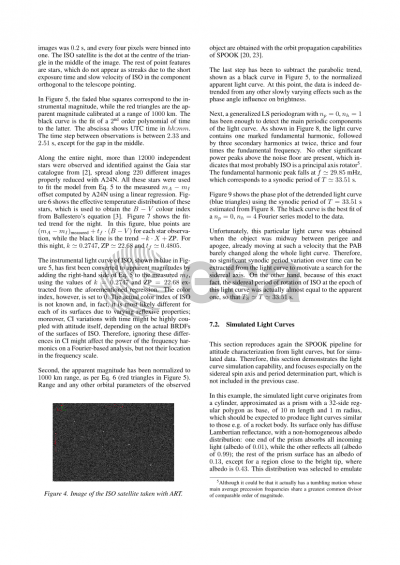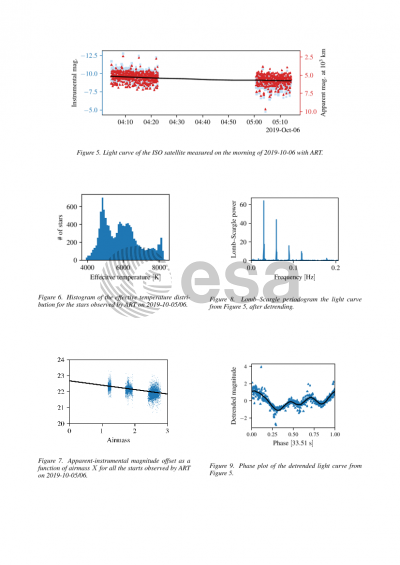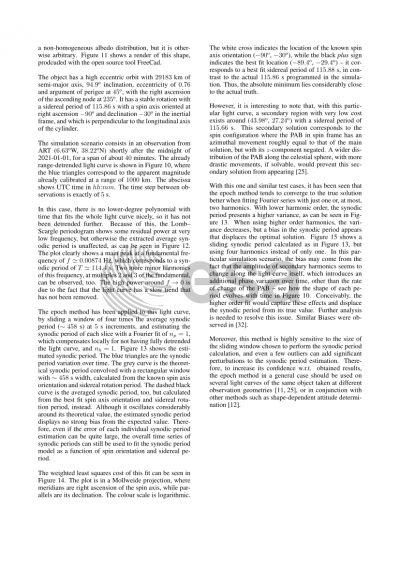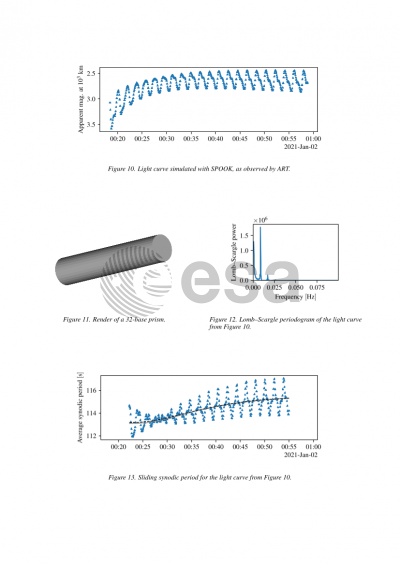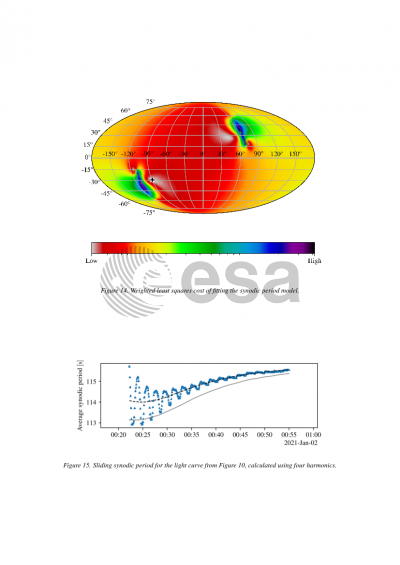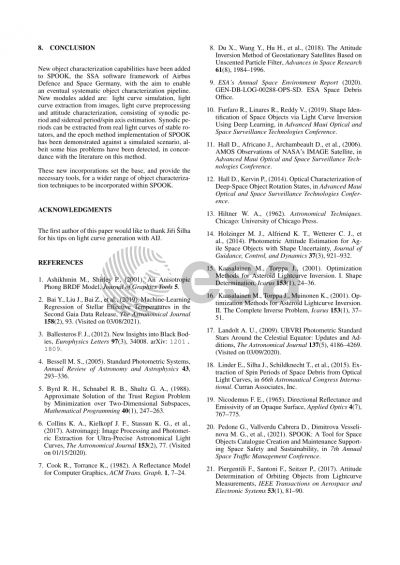Document details
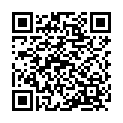
Abstract
Apart from orbital ephemeris, space debris catalogues may contain other object characteristics that are valuable to perform further debris mitigation – e.g., characteristics such as attitude ephemeris, shape and size are necessary for active debris removal.
The Space Situational Awareness (SSA) group of Airbus Defence and Space Germany develops the Special Perturbations Orbit determination and Orbit analysis toolKit (SPOOK), a software framework aimed at maintaining a catalogue of space objects with information on their orbital ephemeris. SPOOK can perform all the main activities of the Space Surveillance and Tracking (SST) workflow, including observation planning, optical and radar measurement simulation and acquisition, either via the in-house Airbus Robotic Telescope (ART) or from third parties, tracklet linking, tracklet correlation and orbit determination. With the aim to include further object characteristics into the catalogue, this paper describes how this workflow is updated to add systematic object characterization capabilities in SPOOK. In particular, this paper focuses on attitude characterization using light curves – chains of brightness measurements from observing a single object with an optical telescope, closely spaced in time. To achieve this goal, two main new blocks have been added to SPOOK: light curve simulation and shape-independent attitude characterization – i.e., the shape of the object is not taken into account to estimate its attitude state.
The first part of this paper describes the light curve simulation capabilities of SPOOK, which use the already existing measurement simulation layer of SPOOK to feed a parametric optical model of the sensor coupled with ray-tracing techniques and an attitude propagator to determine the signal strength received by a simulated telescope. The second part presents the workflow of the attitude characterization, which involves the planning and execution of the observation night for a given sensor; the creation of light curves from the obtained optical measurements; and the detrending of the light curves, including the effects of the atmosphere and range and observation geometry – i.e. the relative position between Sun, object and observer. With the detrended light curves, Fourier transform techniques, in particular Lomb-Scargle peridogram and its extensions, are used to detect dominant frequencies and, finally, Weighted Least Squares (WLS) are used to achieve a complete attitude determination in the inertial frame. This paper further presents how these new additions interface with the already existing SPOOK capabilities, how they fit in the cataloguing workflow.
To conclude, this paper demonstrates the performance and operational range of the attitude characterization workflow when applied on real and simulated scenarios, and explores its operational range in terms of observation scenario and target object characteristics. Real measurements have been obtained with ART. Simulated measurements have been generated by the light curve simulator described in the first part of this paper.
Preview
